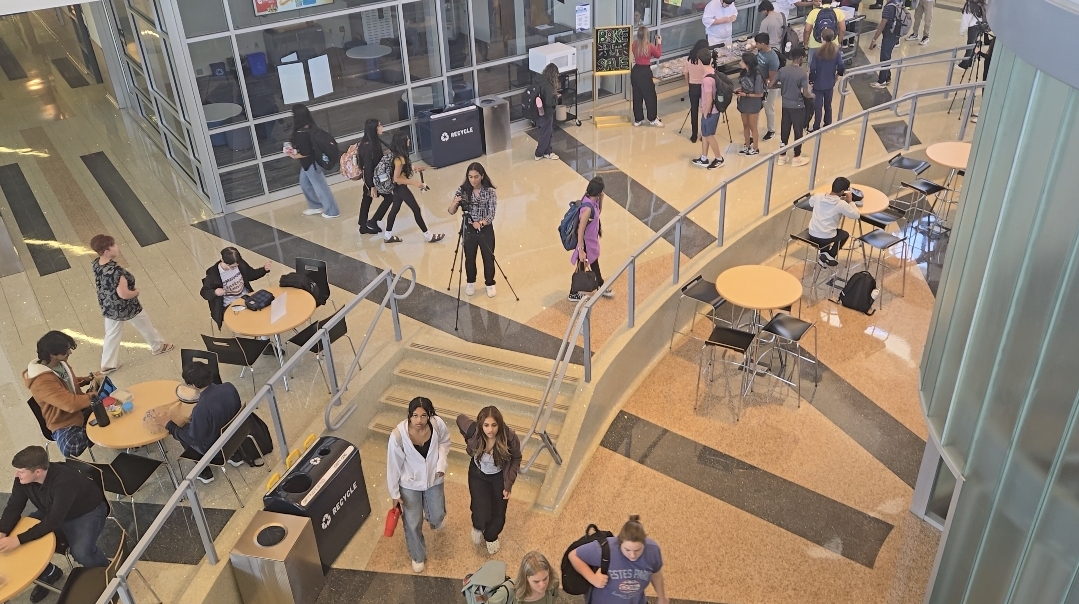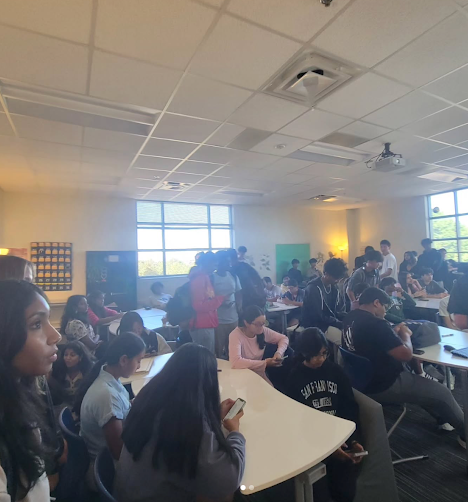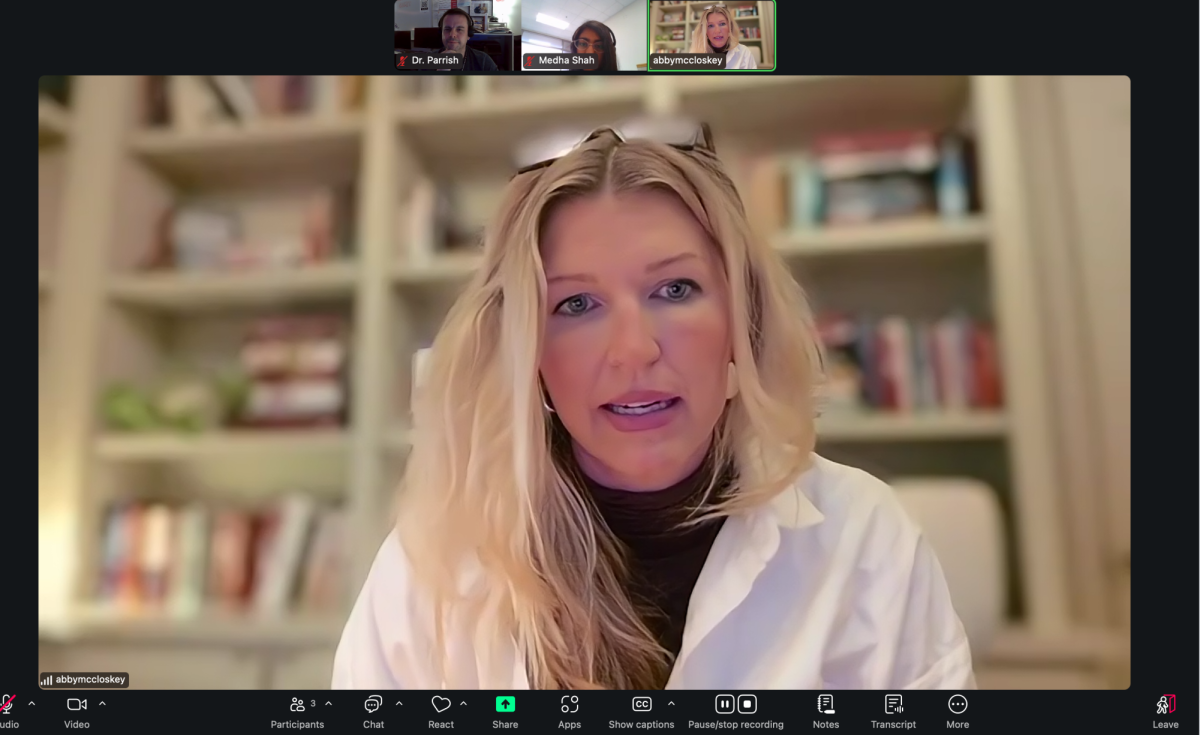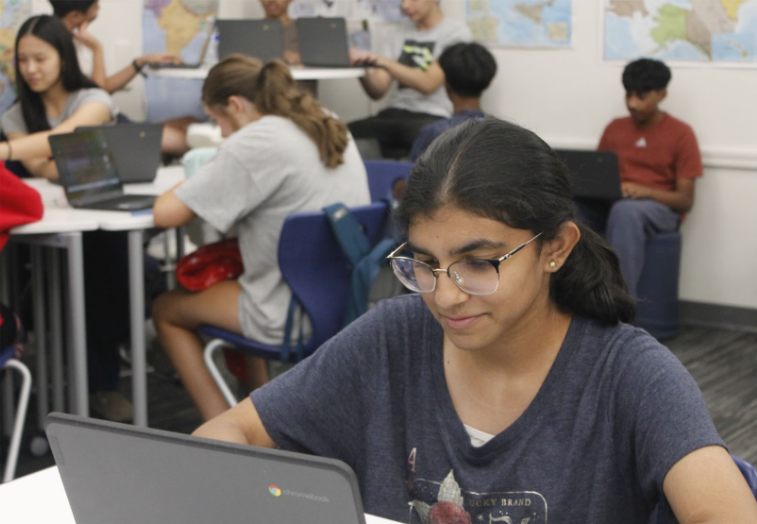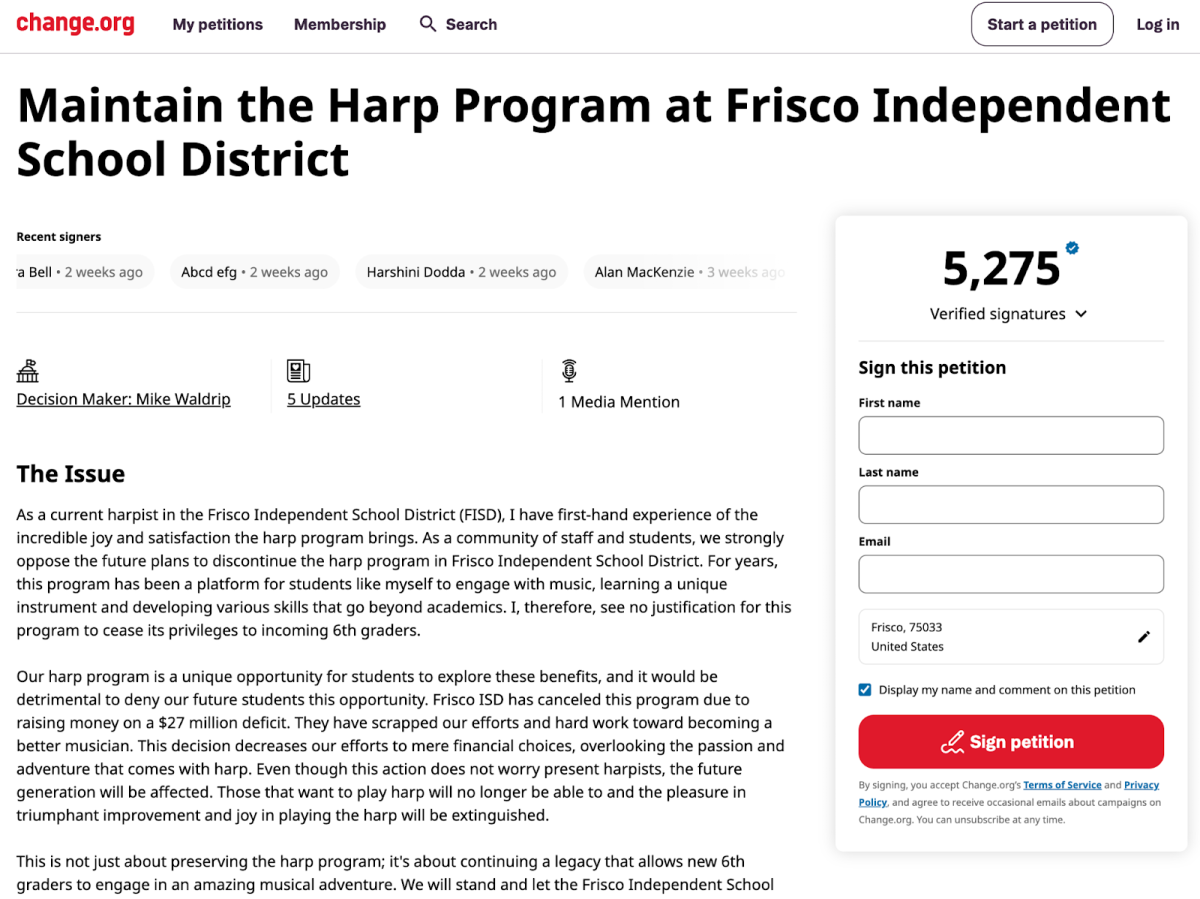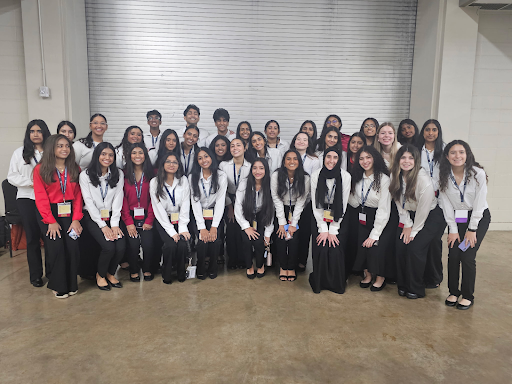FRISCO, TEXAS — Humans, since the start of the new world, have grown their produce outdoors, exposed to the changing weather. With the harsh cold of the winters, it was hard for plants to thrive, but the warmer weather welcomed a healthy harvest. However, in the digital age, it is possible to grow produce indoors no matter the time of year. The hydroponic garden has allowed schools to grow certain vegetables for use in cafeteria lunches, and Centennial High School has implemented this system as of January 2025.
Frisco Independent School District (FISD) Environmental Programs Facilitator Seth Williams and FISD Director of Child Nutrition Lisa Jenkins founded the hydroponic garden as a Title 4 grant project. In Frisco ISD, Lebanon Trail was the first school to introduce the garden to its campus, followed by Centennial High School. The garden is stored in our cafe by Cafeteria Advisor, Ms. Kelly Bartruff, and managed by student groups who make sure that the plants are nourished and grow. Currently, Centennial is focusing on growing romaine lettuce and is planning on growing other vegetables in the future.
Bartruff mentioned, “We will use the product starting March 3, 2025, for as many of the salads as we can. We will put little stickers on it, … [that] say 40 percent grown hydroponic salad, so you can know which salads include it.”
When the first wave of harvested lettuce hit our cafeteria, a curious stir occurred among the student body. Many students picked up the revamped salads to taste test during their lunch period.
Senior Adaora Amadife said, “I thought the display of the lettuce growing was…cool and I enjoyed looking at it through its different phases. I think the lettuce itself is delicious, well-grown, and tastes good, ten out of ten!”
The hydroponic garden has many benefits as well. With this device, we don’t have to rely on produce grown far away. Due to it being in our building, we curate zero food miles, and we supply our cafeteria with lettuce year-round in a climate-controlled environment. It saves 90 percent of water over a conventional farming system. On top of that, the lettuce grown is super fresh and grown with zero pesticides or herbicides, making it a greener choice.
There is much to look forward to with the hydroponic garden. The cafeteria staff hopes to grow more vegetables to include in the school lunches. Ms. Bartruff shares her wishes for the future of the garden.
“[It] would be lovely, because you guys or the school could grow tomatoes and cucumbers for us…we use [those] in a smaller amount, so I believe it could be used for just school products.”
The staff also wishes to start a larger student-run garden in our courtyard where students grow high-demand vegetables in larger quantities, such as red peppers, celery, and russet potatoes.
As society continues to advance technologically, it leaves much to be desired for how we can merge culinary and botany. The garden is the first step to a greener Centennial.





